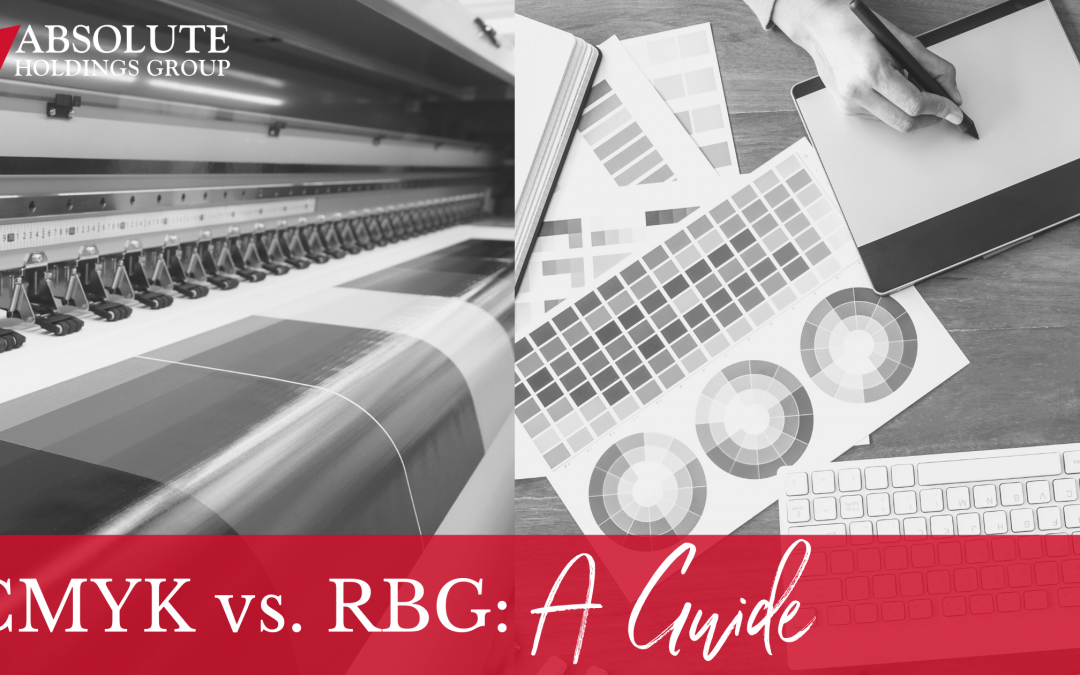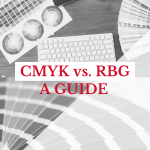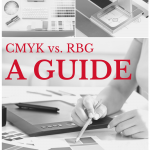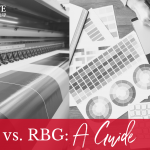Color is how the human eye perceives light. In the world of graphic design there are two major color modes: CMYK and RGB. These color schemes are used by designers and printing companies and there are optimal uses for both.
For those who are planning to create a digital design or have one physically printed, it is important to have an understanding of the difference in order to know which color model best fits a project. Each abbreviation stands for the first (or last) letter of the color names that are included in that mode: CMYK stands for cyan, magenta, yellow, and black. RGB means red, green, and blue.
● RGB is the color model used by scanners, computer monitors, television screens, and digital cameras to render digital color. When you look closely at the pixels on your television screen, they are red, green, and blue. CMYK, on the other hand, is typically used by commercial printing presses for printing of materials such as posters, business cards, merchandise, or product packaging. Essentially, RGB is the standard model for digital displays, while CMYK is the standard model for physical, printed products.
● RGB is an additive process, which means that it combines the three primary colors to create different colors. CMYK is a subtractive process, meaning light is absorbed or removed to create more colors. RGB has a greater range of colors, since these three primary colors can be combined to create just about any color. Some colors may not translate precisely to CMYK.
● When all three colors of light in RGB are combined, the output is a pure white. When the first three colors in CMYK are mixed together, it turns into a dark brown. Black, the last color in the model, is used for completely removing light from the picture.
● Some of the best file formats for RGB files are PSD, JPEG, and PNG. It’s best to stay away from file formats such as BMP, EPS, or TIFF because they take up too much space and may not be compatible with some graphic art and editing software. For CMYK files, the best file formats are AI, PDF, and EPS. Make sure to ask the printing company beforehand if they prefer a specific file format.
For those who are planning to create a digital design, or have one physically printed, it is important to have an understanding of the difference between CMYK and RGB.
Applications for CMYK and RGB
As mentioned above, RGB is the standard model for digital media, while CMYK is the standard model for printed media. For projects that only involve the digital space, use RGB. If these same projects have to be physically printed, the RGB file must be converted into CMYK using graphic editing programs. This is because RGB tends to produce more vivid and vibrant colors than CMYK, so some colors in RGB may be more difficult to reproduce in CMYK.
There are also some projects where it makes sense to start completely using the CMYK model. For example, if the design mostly involves the color grey, it’s best to use CMYK since this particular shade renders more accurately in this color model.
Printing CMYK and RGB Designs
In most cases, a print job will match what is seen on the computer screen. However, there may also be certain deviations or differences in color because of the different technologies used or the calibration of the equipment. For a precise color match, contact us. We can provide a digital color proof and provide design advice before you commit to a full-print run.






